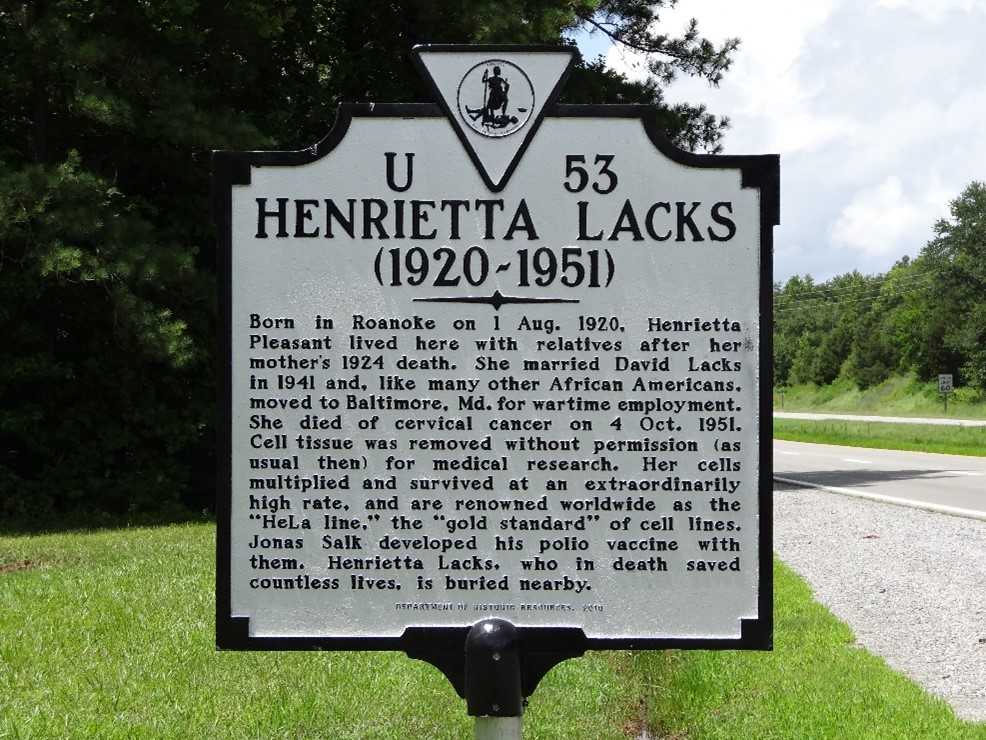Henrietta Lacks
Henrietta Lacks was an African American woman who died in 1951 of an aggressive form of cervical cancer. While she was being treated, and unbeknownst to her and her family, some of her cancer cells were taken by doctors at Johns Hopkins Hospital and were cultured by a researcher to create the first human cells ever to survive outside of the human body. He-La cells, as they became known, were sent to laboratories around the world and have since played a role in many medical breakthroughs and discoveries, including the development of the Polio vaccine and in HIV AIDS research. He-La cells were recently used in Covid-19 research here at the University of Bristol. Henrietta Lacks’s family only became aware of the existence and usage of her cells in the 1970s, and most scientists were completely unaware of the origins of He-La cells until her story became more widely known. Henrietta Lacks’s story is part of what Lara Choksey argues is ‘a longer history of using Black bodies for research, production and profit’ and highlights ‘the disconnect between the massive profits generated from Lacks’s cells, while Black Americans are prevented from access to basic health care’.[i] Lacks’s story has since been told in writing, in art and on film, and the Faculty of Life Sciences at the University of Bristol recently announced that they have commissioned a statue of Lacks to be made by Black Bristolian artist Helen Wilson-Roe, which will be ‘the first public sculpture of a Black woman made by a Black woman in the UK’.[ii] This October, the Lacks family have organised a centennial CELLebration to honour Henrietta’s life and legacy.
[i] Lara Choksey, Narrative in the Age of the Genome: Genetic Worlds (London: Bloomsbury, 2021), p 129.
[ii] http://www.bris.ac.uk/biochemistry/news/2021/henrietta-lacks-on-international-womens-day.html

